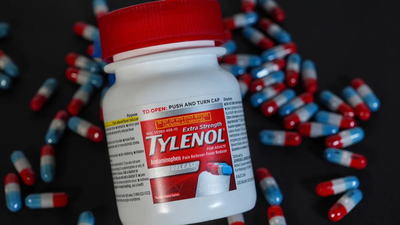Booster shot from GST cuts! Manufacturing activity jumps; October PMI rises to 59.2

India’s manufacturing sector continued to strengthen in October, building on solid momentum from September. The movement was lifted by improving domestic demand, GST relief measures and increased technology investments that boosted factory activity.According to the latest data released by S&P Global, the HSBC India Manufacturing Purchasing Managers’ Index (PMI) rose to 59.2 in October, up from 57.7 in September, signalling a faster expansion in operating conditions. A reading above 50 indicates growth in the sector.“The seasonally adjusted HSBC India Manufacturing Purchasing Managers’ Index (PMI) – a single-figure indicator of sector performance – was up from 57.7 in September to 59.2 in October, indicating a quicker improvement in the health of the sector”.October’s expansion was supported by stronger domestic demand. Firms reported a faster rise in new orders, prompting an increase in both output and purchasing activity. Input inventories expanded at one of the quickest rates in nearly two decades of data collection.External demand, however, lost some pace. New export orders in October rose at the slowest rate in ten months, suggesting that the recent surge in activity was largely domestically driven.The latest PMI data also reflected strong inventory building. Manufacturers purchased more raw materials and semi-finished goods, anticipating future production needs. Buying levels grew at the fastest pace since May 2023. Stocks of raw materials and semi-finished inputs increased at the second-fastest rate since data collection began in March 2005, only behind the May 2023 peak. Finished goods inventories rose marginally as several companies fulfilled orders from existing stock.Capacity pressures remained mild. Outstanding business volumes increased only slightly, and suppliers were able to deliver inputs more efficiently, leading to the quickest improvement in delivery times in four months.The PDF data on September shows how the latest improvement builds on previous trends. In September, the PMI eased to 57.7, down from 59.3 in August, marking the slowest improvement since May. Despite the moderation, activity remained strong, supported by resilient demand and a rise in international orders.The S&P Global release noted that September also saw sharper increases in both input costs and selling prices, driven by higher prices of battery, cotton, electronic components and steel. Output charges rose at the fastest pace in nearly twelve years as firms passed cost pressures onto customers.Pranjul Bhandari, Chief India Economist at HSBC, said, “The September headline index softened, but it remained well above the long-term average. New export orders increased at a faster rate in September, indicating demand outside of the US might be offsetting any decline in demand from the US as a result of tariffs. Business confidence, as indicated by expectations for future output, showed a big jump in September, potentially reflecting optimism about the boost in demand from the cuts in goods and services tax (GST), although US tariffs remain a strong headwind to the economy.“Despite the slower pace of job creations in September, with only 2% of surveyed firms indicating higher staffing, manufacturers entered October with strong confidence. Companies continued to expand their input purchasing, and the overall level of optimism rose to a seven-month high, supported by demand resilience and GST-related benefits.Looking ahead, firms expect production to increase further, backed by capacity expansion, marketing initiatives and the clearing of pending contracts. The broader outlook remains positive as manufacturers foresee continued demand, both at home and overseas.
Discover more from stock updates now
Subscribe to get the latest posts sent to your email.











